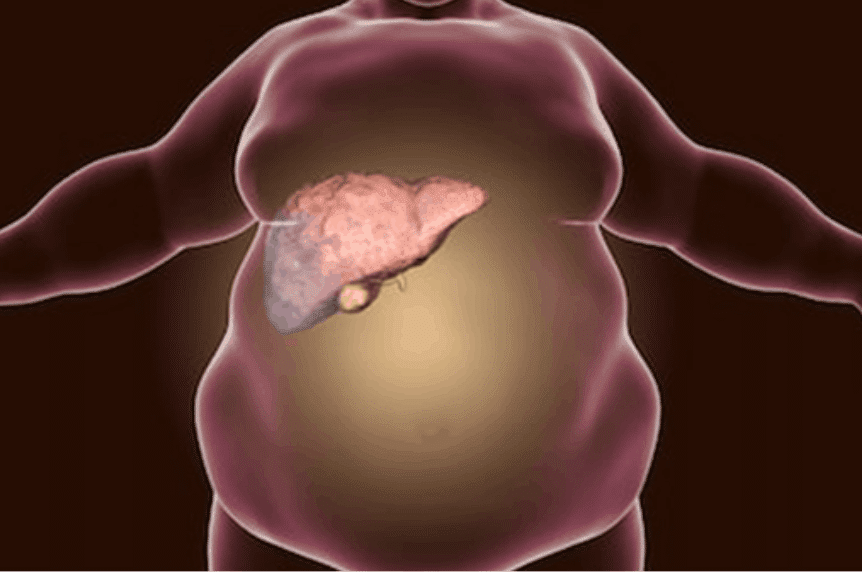Fatty Liver: How Do I Claim This?

Fatty Liver Disease (FLD) dates to the dawn of the industrial revolution – when food started to be processed more abundantly while demand for hard labor declined. It wasn’t until the 1980s that fatty liver gained recognition in the clinical arena. The rise of technology and virtual reality led to a decrease in physical activity and the promotion of a sedentary lifestyle. The rising number of patients shows how this fatty liver is the disease of our generation.
What is Fatty Liver?
Fatty liver is a condition of stainable fat retention in hepatocytes. Inlay man’s term, it is when the liver gains significant fat buildup that causes or leads to blood infiltration.
Because the liver itself is already meaty, recognizing a fatty liver is difficult. It is deemed as the “silent liver disease” because it can manifest without any noticeable symptoms.
Detection is also challenging because there’s really no dedicated method to identify whether your liver is fatty or not. Almost all the time, fatty liver disease is diagnosed by accident when ultrasound, CT scan, or MRI procedures are conducted for another reason.

What is Non-Alcoholic Fatty Liver Disease?
The main distinction between Alcoholic (AFLD) and Non-Alcoholic Fatty Liver Disease (NAFLD) is that the latter is not acquired through alcohol use. Heavy drinkers develop AFLD, while NAFLD is a result of poor lifestyle and dietary habits.
COMMON RISK FACTORS
One out of three Americans develops NAFLD because of metabolic problems such as:
- Diabetes (common in type 2 diabetes patients)
- Pre-diabetes or insulin resistance
- Obesity
- High blood fat levels or hypertension
If you notice, these diseases are also some of the common conditions claimed by veterans.
About 41% of veterans receiving Veterans Health Administration (VHA) care have NAFLD, and 31% of them become obese within six years post-discharge. Translated into numbers, that 31% case is a staggering 6.6 million veterans!
TYPES of NAFLD
There are two types of NAFLD:
- Fatty liver (or simply NAFLD)
- Non-alcoholic steatohepatitis (NASH)
NASH is a more chronic type of fatty liver disease compared to NAFLD. But the latter is more prevalent compared to the former. Statistically, 10% to 20% of Americans have NAFLD, while only 2% to 5% have NASH.
NAFLD is simply a fatty buildup in the liver. It does not lead to severe ailments, unlike NASH, which can progress to liver scarring, cirrhosis, and (worst) cancer. Patients with NASH have high inflammation and liver cell injury that can become fatal when untreated. According to a Harvard publication, NASH cirrhosis is expected to be the number one reason for liver transplant by 2020. Liver biopsy is the best detection/diagnostic tool for NAFLD. However, it is too costly, making fatty liver diseases hard to mitigate at its early stages.

How Does the VA rate Fatty Liver Conditions?
Fatty Liver Diseases are rated according to 38 CFR § 4.114 – Schedule of Ratings for Digestive System, under the Codes 7312, 7345, 7351, and 7354.
- CODE 7312 covers liver cirrhosis, primary biliary cirrhosis, and primary sclerosing cholangitis. Available ratings are as follows:
- 100% – condition causes highly disabling symptoms like fatigue, apparent weight loss, and jaundice. This rating shall also apply when there is abdominal pain, swelling or bleeding, and/or significant mental disturbance and loss of consciousness.
- 70% – condition leads to 2 or more occurrences of abdominal swelling or bleeding and psychological distress in-between disease activity and inactivity.
- 50% – there is one episode of abdominal swelling or bleeding and mental disturbance.
- 30% – hypertension and swelling in the spleen that leads to weakness, anorexia, stomachache, restlessness, and slight weight loss.
- 10% – condition leads to fatigue, anorexia, stomach pain, and anxiety.
- CODE 7345 covers any chronic liver disease other than cirrhosis and Hepatitis C (Hepatitis B, chronic active hepatitis, autoimmune hepatitis, hemochromatosis, and drug-induced hepatitis). Available ratings are as follows:
- 100% – there are near-constant or completely disabling symptoms such as fatigue, uneasiness, vomiting, anorexia, joint pain, and pain in the upper right abdomen.
- 60% – incapacitating episodes of significant fatigue, uneasiness, anorexia with noticeable weight loss or malnutrition, and liver is swelling for six weeks or more in the past year.
- 40% – incapacitating episodes of significant fatigue, uneasiness, anorexia with noticeable weight loss or malnutrition, and liver is swelling for 4 to 6 weeks in the past year.
- 20% – incapacitating episodes of significant fatigue, uneasiness, anorexia with noticeable weight loss or malnutrition, and liver is swelling for 2 to 4 weeks in the past year.
- 10% – incapacitating episodes of significant fatigue, uneasiness, anorexia with noticeable weight loss or malnutrition, and liver is swelling for 1 to 2 weeks in the past year.
- 0% – there is a diagnosis, but symptoms are not evident.
- CODE 7351 is the rating for when a liver transplant is performed. Automatically, when a veteran undergoes a liver transplant, the VA will award him/her a temporary 100%, which will continue for one year after surgery. After this, the condition will be re-evaluated and awarded with a new rating. The minimum rating for this code is 30%.
- CODE 7354 covers Hepatitis C and/or any hepatitis other than A or B. Hepatitis C is the embodiment of silent liver disease because this type of infection does not show signs or symptoms but can lead to serious cases like cirrhosis and liver cancer. Available ratings: see Code 7345.
How Do I Claim Fatty Liver Disability with the VA?
- Like most disabilities filed with the VA, the number one requirement in filing for Fatty Liver Disease (FLD) claim is Medical Diagnosis. It can be a current or past diagnosis. You just need to show that an expert medical opinion backs up your claim for FLD.
- As with all other claims, the VA will look for Service-Connection. Did you develop this condition during active duty? Were you seen by military doctors for NAFLD or NASH? Were you prescribed medications to counter the fatty buildup or scarring in your liver? Were you prescribed with medications addressing obesity, diabetes, and/or hypertension?
- If you can present a medical diagnosis and have evidence that your FLD is service-connected, you need a Medical Nexus Letter to bridge the connection between the two. A nexus letter is a technical, academic, and eloquent way to explain to the VA why you should be compensated for your diagnosed and service-connected FLD.
At VA Claims Insider, we are partnered with a team of independent medical professionals who has extensive experience in writing up nexus letters to backup winning FLD conditions. Sign through this Elite intake link to get started!

